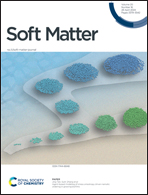Enzymatic functionalization of decellularized tilapia skin scaffolds with enhanced skin regeneration†
Abstract
The decellularized tilapia skin (dTS) has gained significant attention as a promising material for tissue regeneration due to its ability to provide unique structural and functional components that support cell growth, adhesion, and proliferation. However, the clinical application of dTS is limited by its low mechanical strength and rapid biodegradability. Herein, we prepare a novel RGD (arginine–glycine–aspartic acid) functionalized dTS scaffold (dTS/RGD) by using transglutaminase (TGase) crosslinking. The developed dTS/RGD scaffold possesses excellent properties, including a medium porosity of ∼59.2%, a suitable degradation rate of approximately 80% over a period of two weeks, and appropriate mechanical strength with a maximum tensile stress of ∼46.36 MPa which is much higher than that of dTS (∼32.23 MPa). These properties make the dTS/RGD scaffold ideal for promoting cell adhesion and proliferation, thereby accelerating skin wound healing in a full-thickness skin defect model. Such an enzymatic cross-linking strategy provides a favorable microenvironment for wound healing and holds great potential for application in skin regeneration engineering.



 Please wait while we load your content...
Please wait while we load your content...